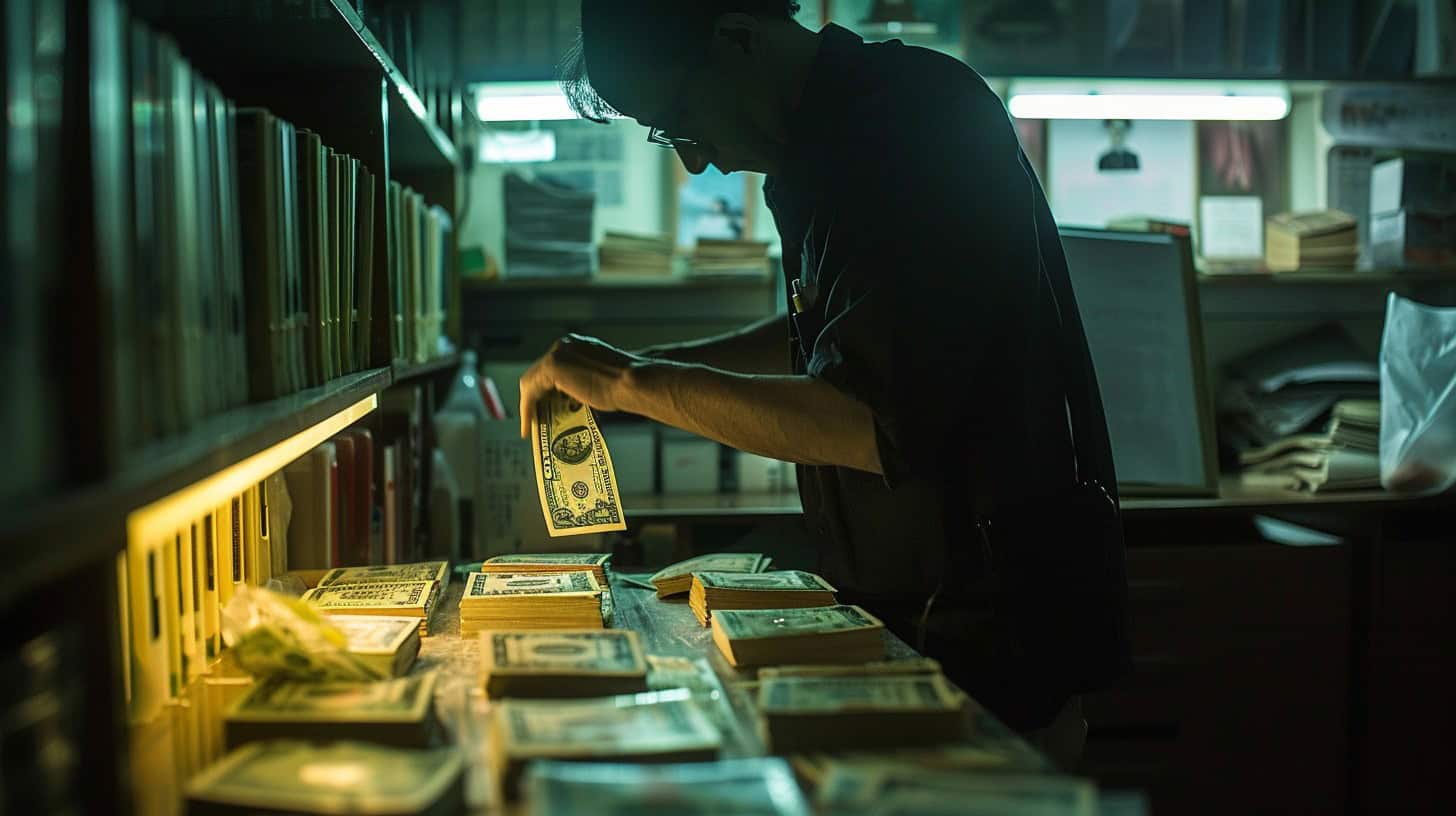Stumbling upon fake money can be alarming. Each year, banking officials and the Secret Service seize millions in counterfeit currency. This article guides you through 3 legal and safe steps to handle such situations.
Stay informed…
Key Takeaways
If you find fake money, don’t use it or give it away. Put it in a safe place and tell the police or U.S. Secret Service quickly.
Real money has special signs like watermarks and color-shifting ink. Tools like UV lights and pens can help see if cash is fake.
Banks won’t swap your fake bill for a real one but will help by reporting it to stop more fake bills from getting out.
Using or making fake cash is against the law. You could go to jail for it.
People, banks, and cops work together to stop fake money. They use cool tech tools and share what they know to catch crooks faster.
Table of Contents
How to Identify Counterfeit Money
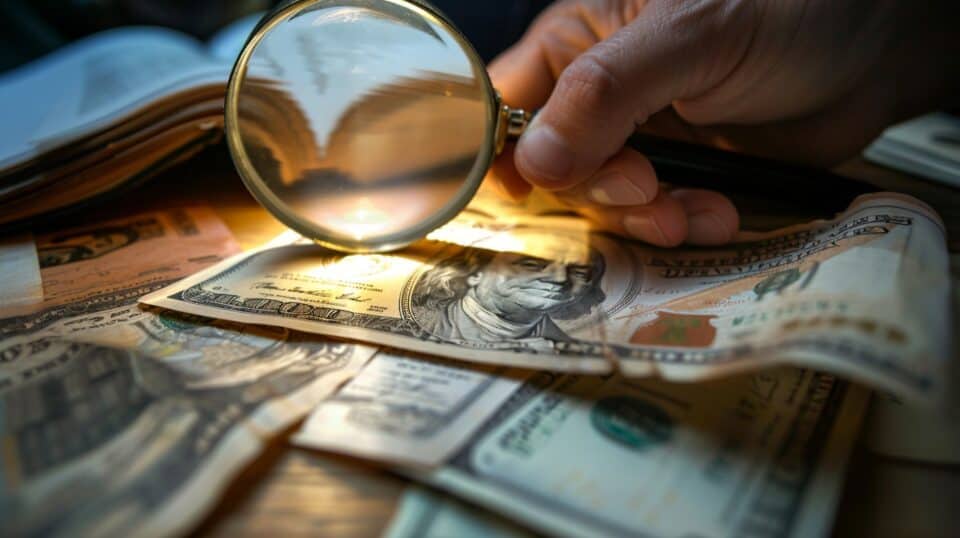
To spot fake cash, check for unusual textures or colors. Use gadgets like UV lights or markers to find out if a fake money stack is real or not.
Characteristics of Fake Money
Fake money lacks the security features of real U.S. banknotes. Real bills have watermarks, a security thread, microprinting, color-shifting numbers, a 3-D security ribbon, and an ultraviolet light glow.
Counterfeiters often fail to replicate these details accurately. The texture is off too since they don’t use the intaglio press for printing like the U.S. Bureau of Engraving and Printing does.
Detection tools like counterfeit detectors can spot these missing features in fake currency easily. For example, when you hold a bill up to the light, look for its watermark and the security thread with clear text running vertically down it.
Most retail stores have such tools ready at cash registers to check large denomination bills before accepting them from customers to prevent accepting counterfeit notes unknowingly.
Detection Tools and Technology
Detection tools and technology are vital for spotting fake currency. Counterfeit money detectors can quickly tell if a bill is real or not. They look at things like color-shifting ink and magnetic properties, which are key features in modern Blue Note $100 bills.
Businesses, especially those dealing heavy cash transactions such as drug stores and dealers, use these detectors to check every bill they receive.
In my experience, using a counterfeit detector at our local store has dramatically reduced the risk of accepting fake bills.
These devices work fast, often in seconds. This helps keep lines moving smoothly without holding up customers. For places that handle less cash or want an extra layer of security, there are also pens and UV lights available.
The local police department and U.S. Secret Service recommend using a combination of detection methods for the best results. This approach ensures businesses stay safe from fraudulent currency while operating efficiently.
Steps to Follow if You Receive Counterfeit Money
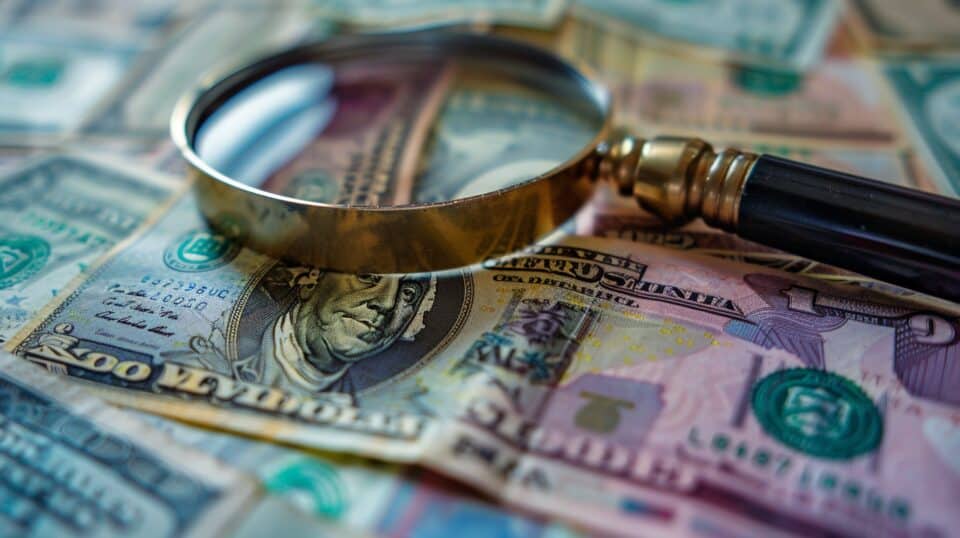
If you get fake cash, stop. Don’t use it or give it to someone else. Next, tell the police or the U.S. Secret Service about it right away. They know how to handle these situations and can take the necessary actions to investigate further.
Avoid Circulating the Counterfeit
Keep the fake bill away from your wallet. You find a counterfeit note—do not use it to buy something or give it to someone else. The action protects others and keeps you on the right side of the law.
Put the counterfeit in a safe place like a clear envelope or folder. This step is crucial until you can hand it over to the authorities, specifically police or US Secret Service agents.
Next, make that call. Reach out directly to local police or contact U.S. Secret Service field office without delay. They handle cases involving counterfeit currency and will know what to do with the note you’ve found.
By reporting, you play an important role in stopping fraudsters from harming more people with their fake bills.
Report to Authorities
Report the suspected fake money to your local police or the Secret Service. This action is key in fighting against counterfeiters. Telling them about a counterfeit bill doesn’t make you a suspect.
It helps stop criminals who make and use these bills.
Reporting fake money protects everyone from crime.
Next, understand the penalties for using counterfeit currency to avoid trouble.
Legal Aspects of Possessing Fake Money
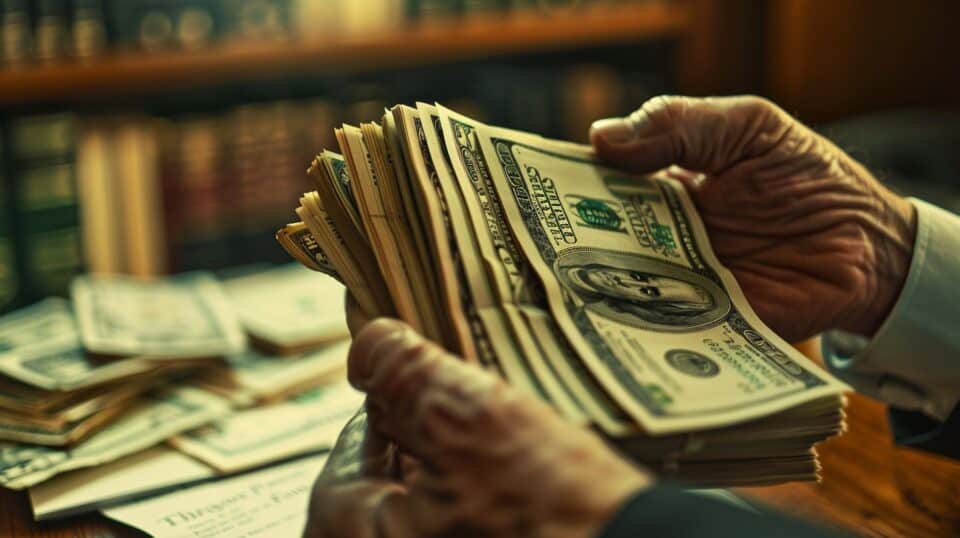
Holding fake money is illegal. If caught, you could face serious punishment.
Know Your Legal Obligations
Handling counterfeit bills comes with rules. The Secret Service says you must give fake money to them. You find their offices online easily. This step is not a choice but a must-do.
Don’t try to spend it or pretend it’s real cash. Doing so lands you in hot water, facing hard penalties.
Banks play a big role here too. They teach customers how to spot and report fake notes—the goal: stop these bills from spreading any further. If you get stuck with one, tell your bank right away.
They know the proper steps and will guide you through the process safely.
Penalties for Circulating Counterfeit Currency
Understanding your legal obligations leads to recognizing the consequences of circulating fake money. The law treats this act with utmost seriousness. If caught, one could face years in prison.
For example, Jeff Turner faced a potential three-year sentence for his actions before striking a deal with the Secret Service.
This strict approach aims to protect our cashless society from harm. Authorities use advanced technology and cooperation with financial institutions to catch offenders. They ensure that those who break the law receive appropriate punishment, keeping our transactions safe and trustworthy.
The Role of Financial Institutions in Fighting Counterfeit Money
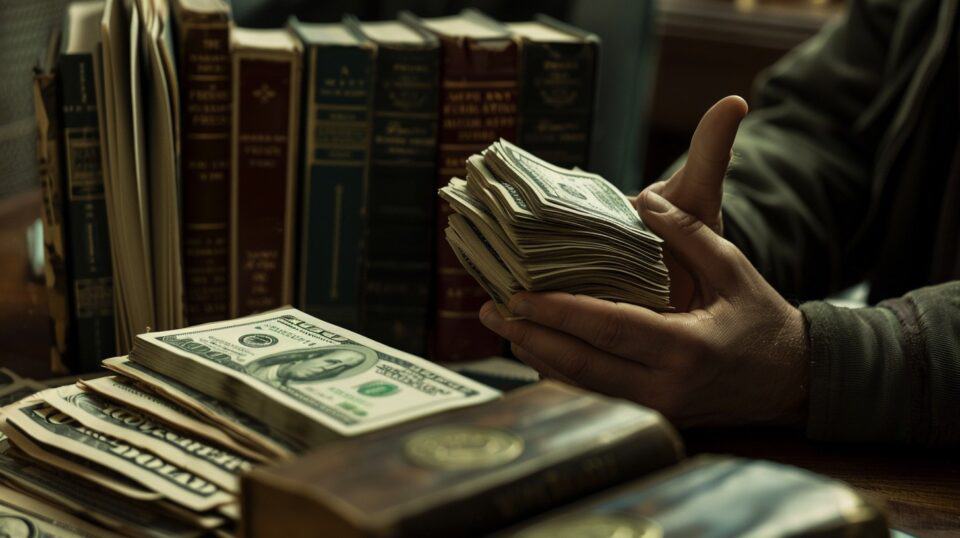
Banks and other money-related businesses work hard to spot fake bills. They use special machines and follow rules to make sure bad cash doesn’t spread.
Bank Procedures for Handling Fake Money
Banks play a key role in spotting and handling fake money. If you hand over a counterfeit bill, banks can take it but won’t give you real money in return. This action stops the bad bill from getting back out there.
They report this to the right people who work on stopping fake bills.
Banks do not provide financial compensation for returned counterfeit currency, yet their efforts are crucial in combating counterfeiting.
Customer Reporting Guidelines
If you find fake money, the Secret Service says to report it. First, keep the counterfeit note safe in a cover. Then, give it to law enforcement officers. You play a big part in stopping crime with this simple step.
This helps everyone and keeps fake money from spreading. Next, let’s talk about preventing more fake bills from getting out there.
Preventing the Spread of Counterfeit Money
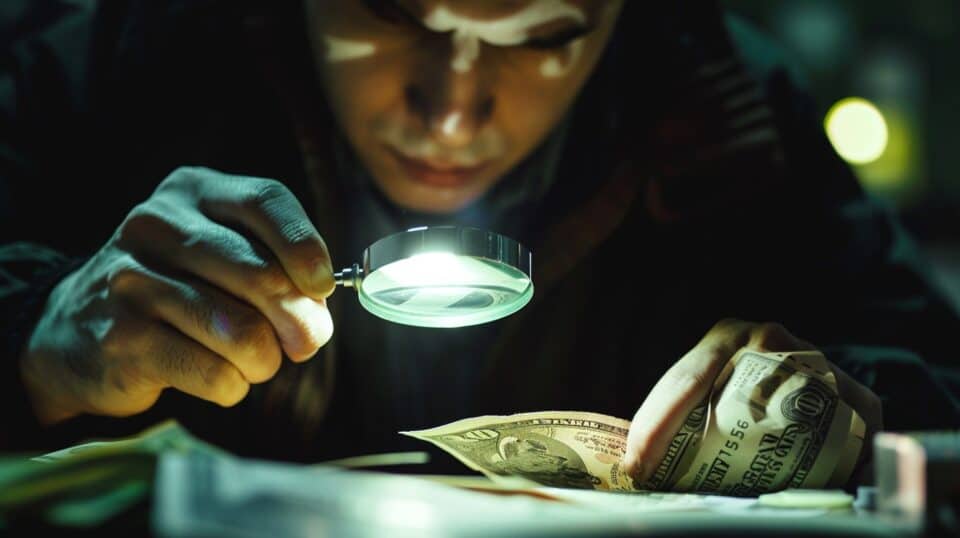
Stopping fake money from getting around is key. We need to tell people more about it and teach those who work with money how to spot the fakes.
Launch Public Awareness Initiatives
To fight fake money, launching public awareness initiatives is key. These programs teach people how to spot supernotes and other kinds of counterfeit cash. For instance, government agencies hold events and create online resources for this purpose.
They might show the difference between real and fake bills through videos or guides.
Banks and schools often join in. They share tips on using special tools like markers or machines that can tell if a bill is real or not. Social media plays a big role too, with posts alerting followers about the latest scams involving fake money.
Together, these efforts make it harder for counterfeiters to succeed.
Train Employees and Businesses
Teaching employees and businesses how to spot fake money is crucial. Show them security features like security threads, watermarks, and microprinting on bills. Employees can use counterfeit money detectors for quick checks.
Every person in a business should know these signs by heart.
Using real-life examples makes training stick. Practice with actual currency helps too. Make sure everyone knows how to use detection tools effectively. This knowledge keeps businesses safe from accepting fake cash.
Next, we explore advanced techniques for spotting counterfeit money…
Advanced Techniques for Detecting Counterfeit Money
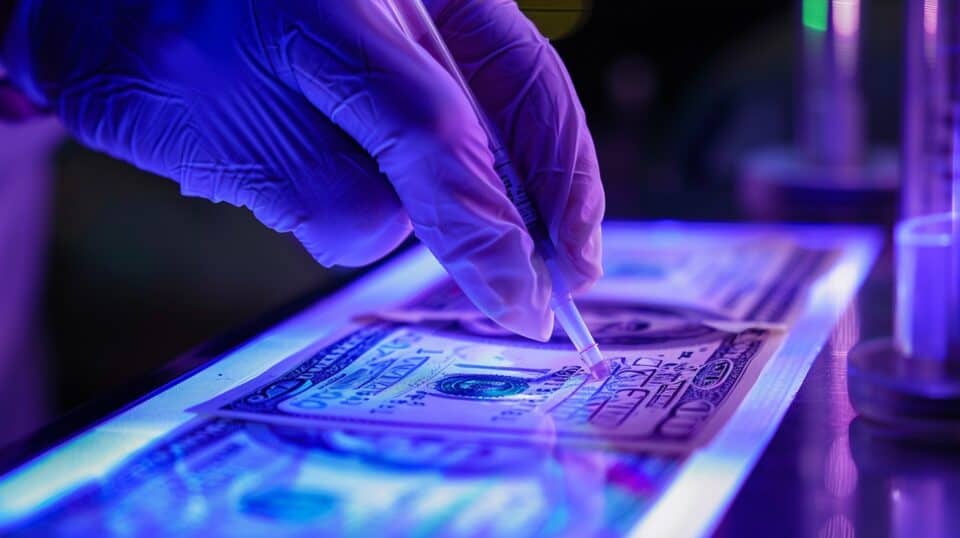
Tech gets smarter every day. Today, gadgets that spot fake bills use UV lights and special markers… even more, banks work with police to stop fake money makers.
Newest Detection Technologies
Scientists and tech experts create new ways to find fake money. They use machines that can see tiny details we can’t. Some tools check if the ink changes color when you tilt it. Others look for special marks only seen with UV light.
These technologies make sure no fake bill gets missed.
With these gadgets, catching counterfeit cash is easier than ever.
Companies also work with police to stop fake money from spreading. This teamwork means they catch more bad guys who make or use fake money. Every time a new tool comes out, it’s harder for criminals to trick people and businesses with their phony bills.
Cooperation Between Law Enforcement and Financial Bodies
Law enforcement agencies and financial institutions work closely together to catch fake money makers. Banks have special tools to spot counterfeit bills. When they find one, they must tell the police or another agency right away.
This teamwork is a big deal because it stops fake money from spreading and catches criminals faster.
For example, if a bank notices several fake $20 bills, it quickly shares this information with law agencies. Together, they look at where these bills came from and try to find who made them.
They use cameras inside banks and numbers on the bills to track down the bad guys. This shows how important it is for cops and banks to share what they know to keep everyone safe from counterfeit money.
Case Studies on Counterfeit Money Incidents
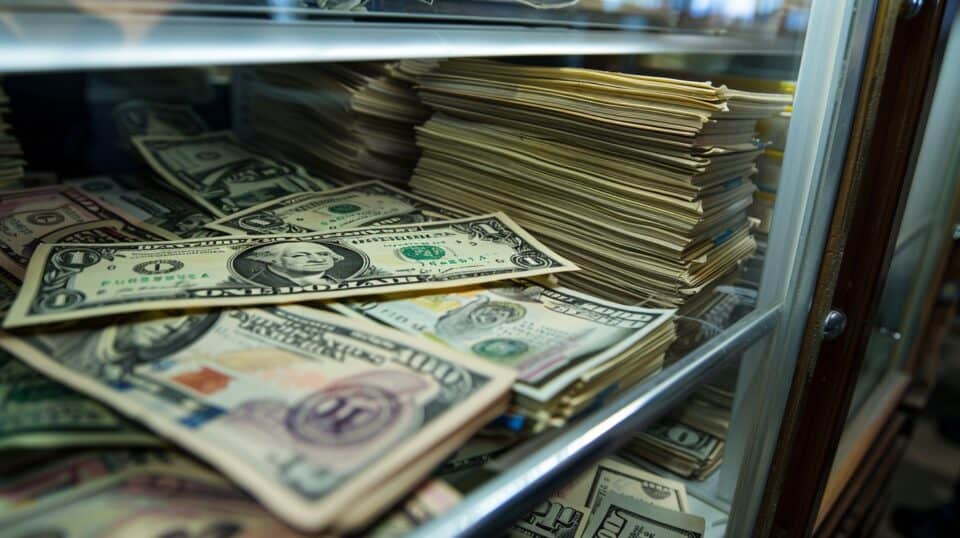
Exploring stories of fake money cases shows us the sneaky ways people make and pass it. We learn from past mistakes – seeing how criminals got caught helps banks, shops, and you stay one step ahead.
Analysis of a Counterfeit Money Operation
Jeff Turner created over a million dollars in fake U.S. banknotes. He focused on the 96 series $100 bill and some 2013 Blue Notes. This operation shows how counterfeiters use printing equipment to make money that looks real.
Authorities caught him by tracking the unique patterns of these fakes.
Turner’s case teaches us to spot signs of fake money, like wrong colors or paper feel. It also shows why it’s crucial for everyone, from banks to shoppers, to check their cash carefully.
Reporting fake bills helps stop counterfeiters like Turner from spreading more fake money into our lives.
Insights from Historical Counterfeit Cases
Looking back at old fake money stories, we learn a lot. The Secret Service stopped $73 million in counterfeit notes from getting into the U.S. economy in 2017. This shows us how big the problem was and still is.
They use special skills and tools to find fake bills. One man, Turner, got caught in 2019 for making false money. He faced up to three years behind bars for his actions.
These examples teach us about the risks of counterfeit currency and why it’s vital to stop it from spreading. Banks play a huge role here by checking all the money they get and teaching customers what to do if they find fake cash.
It’s clear that fighting against fake money needs everyone – banks, people, and law enforcement – to work together closely.
People Also Ask
What should I do the moment I realize I have fake money?
Stop using it right away, and don’t try to pass it off to someone else.
Who do I report to if I find fake money?
Tell the local police or contact the Secret Service; they handle these things.
Can I get my real money back if I got a fake bill by accident?
Sorry, but no—you usually can’t get your money back once you’ve ended up with a counterfeit bill.
Is it okay for me to check if a bill is real in front of the person who gave it to me?
Yes, absolutely—it’s smart to check bills whenever you feel something might be off.
What happens if someone accidentally uses fake money without knowing it’s not real?
You might face some questions from authorities, so always be honest about where you got the bill from.
